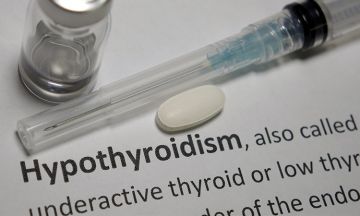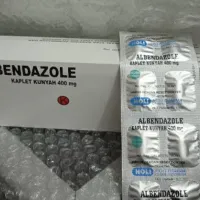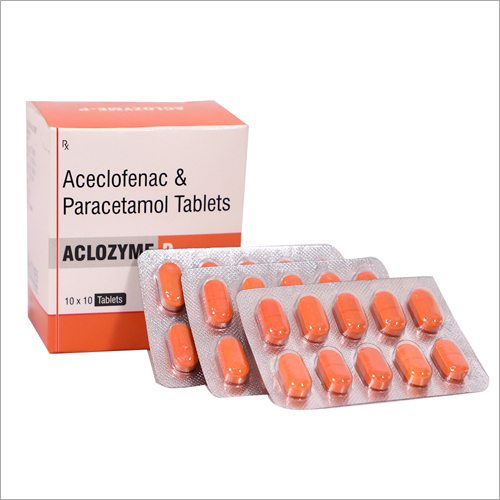TYPHOID TREATMENT IN ALLOPATHIC
AbstractThe therapeutic efficacy of ceftriaxone was evaluated in variable dose and duration schedules in twenty patients with bacteriologically proven typhoid fever. The results were satisfactory in the cases that were given a single dose of 3 g for two days (12/12) or 4 g for one day (3/4). Some untoward reactions were observed in 8 cases, but it was not clinically significant.Ceftriaxone appears to be safe and effective in the treatment of typhoid fever when administered in a single dose of 4 g for one day or 3 g for two days on an outpatients basis.Keywords: Ceftriaxone, Typhoid fever
The Widal test is unreliable but is widely used in developing countries because of its low cost. It measures elevated antibody titers in patients with recent typhoid or paratyphoid fever but may not accurately distinguish acute from past infection and lacks specificity, resulting in false-positive results. Serologic assays are not an adequate substitute for blood, stool, or bone marrow culture.
Mallon didn’t understand how she could spread disease without being sick and continued to work as a cook after her first quarantine. She was responsible for over 100 people getting sick with typhoid fever and at least five deaths. She’s thought to be the source of an outbreak of 3,000 cases of typhoid in New York. She was quarantined a second time, for the rest of her life, and has since been known as “Typhoid Mary.”
Typhoid fever is an illness caused by the Salmonella typhi bacteria. The illness is contracted by ingesting the bacteria in contaminated water or food. Symptoms include headaches, fever, diarrhea, lethargy, aches and pains, and poor appetite. Treatment focuses on killing the Salmonella bacteria with antibiotics.
Prevalence of Malaria. Malaria was the most prevalent disease in the study area. From the total 200 febrile patients 73 (36.5%) were malaria positive. Of them, 32 (43.8%) were positive for P. falciparum, 30 (41.1%) were positive for P. vivax, and the remaining 11 (15.1%) were positive for both P. falciparum and P. vivax. The positivity rates of P. falciparum and P. vivax were 51.2% and 48.8%, respectively (Figure 1).
CausesTyphoid is caused by the bacteria S. typhi. It spreads through food, drinks, and drinking water that are contaminated with infected fecal matter. Washing fruit and vegetables can spread it as well if the water is contaminated.Some people have typhoid without experiencing any symptoms. Others continue to harbor the bacteria after their symptoms have gone. Sometimes, the disease can appear again.People who test positive for typhoid may not be allowed to work with children or older adults until medical tests are negative.
Overview What is typhoid fever? Typhoid fever is an illness caused by the bacterium Salmonella Typhi (S. Typhi). It infects your small intestines (gut) and causes high fever, stomach pain and other symptoms. Typhoid fever is also called enteric fever. You’ll commonly hear paratyphoid fever mentioned along with typhoid. Paratyphoid fever is similar to typhoid with more mild symptoms. It’s caused by Salmonella Paratyphi (S. Paratyphi). S. Typhi and S. Paratyphi are different than the Salmonella bacteria that cause salmonellosis, a common type of food poisoning. Who does typhoid fever affect? Typhoid fever is most common in rural areas of developing countries where there isn’t modern sanitation. Countries in South and Southeast Asia, Central and South America, Africa and the Caribbean are most affected by typhoid. Travelers are most at risk when visiting Pakistan, India or Bangladesh. Children are more likely to get typhoid than adults. How common is typhoid fever? It’s estimated that 11 million to 21 million people around the world get typhoid each year. It’s rare in the U.S., Canada, Japan, Western Europe and Australia. What’s a long-term carrier of typhoid fever? Some people continue to be contagious with typhoid fever even after they’ve recovered (long-term carrier). You can spread typhoid for a year or more with no symptoms. It’s important to get tested for S. Typhi after you feel better to make sure you can’t spread it to other people. What’s the difference between typhoid and typhus? While the names sound the same, typhoid and typhus are different illnesses, caused by different bacteria. The symptoms are similar — so much so that doctors used to think they were the same illness. We now know they’re different illnesses, but the similar name stuck (and so did the confusion it causes).
Information from the National Library of Medicine Choosing to participate in a study is an important personal decision. Talk with your doctor and family members or friends about deciding to join a study. To learn more about this study, you or your doctor may contact the study research staff using the contacts provided below. For general information, Learn About Clinical Studies.
The positivity rates of P. falciparum and P. vivax were almost similar (51.2% and 48.8%, resp.). But according to the Federal Ministry of Health report the relative frequency of P. falciparum and P. vivax was 60% and 40%, respectively . There is a great difference in frequencies of two plasmodium species. The difference in the frequencies of the two species might be the result of the prevention and control measures employed in the study area that have higher impact on P. falciparum than P. vivax. In case of P. vivax the dormant stage of the parasite can relapse at any time and relatively maintain its prevalence in the community.
Antibiotic therapy shortens the clinical course of enteric fever and reduces the risk for death. Fluoroquinolones (such as ciprofloxacin) are often used for empiric treatment of enteric fever in adults and are considered the treatment of choice for fluoroquinolone-susceptible infections. However, most infections in the United States are acquired during travel abroad, particularly to regions where enteric fever is endemic and fluoroquinolone nonsusceptibility among Typhi and Paratyphi A isolates is common. Fluoroquinolone-nonsusceptible infections are also usually resistant to the synthetic quinolone, nalidixic acid, and have been associated with treatment failure or delayed clinical response.
Escherichia coli (E. coli) is a bacterium usually found in the gut. Most strains are not harmful, but some produce toxins that can lead to illnesses such as meningitis and pneumonia, as well as infections in the urinary tract and intestines. Here, learn more about E. coli infections, their treatments, and prevention.
In the past, the drug of choice was chloramphenicol. Doctors no longer commonly use it because of side effects, a high rate of health deterioration after a period of improvement (relapse) and widespread bacterial resistance.
Malaria is one of the febrile illnesses and the most common fatal disease in the world caused by one or more species of plasmodium. These are Plasmodium falciparum, Plasmodium vivax, Plasmodium ovale, Plasmodium malariae, and Plasmodium knowlesi. Approximately half of the world population is at risk of malaria. Most of malaria cases and deaths occur in sub-Saharan Africa. According to the World malaria report 2011, there were about 216 million cases of malaria and an estimated 655,000 deaths in 2010 .
Typhoid Fever Typhoid fever is an illness you get from S. Typhi bacterium. It causes a high fever, flu-like symptoms and diarrhea. You can be contagious with typhoid even if you don’t feel sick. Typhoid can be life-threatening and should be treated promptly with antibiotics. If you live in or travel to an area where typhoid is common, you should get vaccinated. Appointments 216.444.6503 Appointments & Locations Contact Us
Symptoms Early symptoms include fever, general ill-feeling, and abdominal pain. High fever (103°F, or 39.5°C) or higher and severe diarrhea occur as the disease gets worse.Some people develop a rash called "rose spots," which are small red spots on the abdomen and chest.Other symptoms that occur include:Bloody stoolsChillsAgitation, confusion, delirium, seeing or hearing things that are not there (hallucinations)Difficulty paying attention (attention deficit)NosebleedsSevere fatigueSlow, sluggish, weak feeling
The first 12–48 hours after infection are typically the asymptomatic phase. At this point, a person will have no symptoms, although the infection can spread to others.
Early symptoms include fever, general ill-feeling, and abdominal pain. High fever (103°F, or 39.5°C) or higher and severe diarrhea occur as the disease gets worse.
There is a problem with information submitted for this request. Review/update the information highlighted below and resubmit the form. From Mayo Clinic to your inbox Sign up for free, and stay up to date on research advancements, health tips and current health topics, like COVID-19, plus expertise on managing health. Email ErrorEmail field is required ErrorInclude a valid email address Learn more about Mayo Clinic’s use of data. To provide you with the most relevant and helpful information, and understand which information is beneficial, we may combine your email and website usage information with other information we have about you. If you are a Mayo Clinic patient, this could include protected health information. If we combine this information with your protected health information, we will treat all of that information as protected health information and will only use or disclose that information as set forth in our notice of privacy practices. You may opt-out of email communications at any time by clicking on the unsubscribe link in the e-mail. Subscribe! Thank you for subscribing Our Housecall e-newsletter will keep you up-to-date on the latest health information. Sorry something went wrong with your subscription Please, try again in a couple of minutes Retry



























